Bangladesh is a country renowned for its stunning natural landscapes, rich historical heritage, and lively culture. From the longest sandy beach in the world located in Cox’s Bazar to the enigmatic mangrove forests of the Sundarbans, this nation presents countless marvels for visitors.
Each part of Bangladesh narrates a tale — the lush tea plantations of Srimangal, the serene hills of Bandarban, the ancient temples and mosques in Bagerhat, and the coral haven of St. Martin’s Island.
Whether you are passionate about nature, seeking adventure, or interested in history, the tourist attractions in Bangladesh guarantee memorable experiences. With its warm hospitality, vibrant traditions, and varied terrains, Bangladesh is indeed a hidden treasure waiting to be explored by the world.
Bangladesh is a country in Southeast Asia. This little country has lots of natural beauty. On the south, there is the Bay of Bengal. The natural beauty of this country attracts tourists from abroad. The small country has many wonderful places to visit. So if you are one of the tourists, turn around today to see your own country.
Top Tourist Places in Bangladesh
Bangladesh Tourism or Bangladesh Tour related all information you will get this report. Let’s go know about Top Tourist places in Bangladesh-
Here is your Top 10 Tourist Places in Bangladesh. If you want to add another places to this list just comment bellow section.
Cox’s Bazar – The Longest Sea Beach in the World
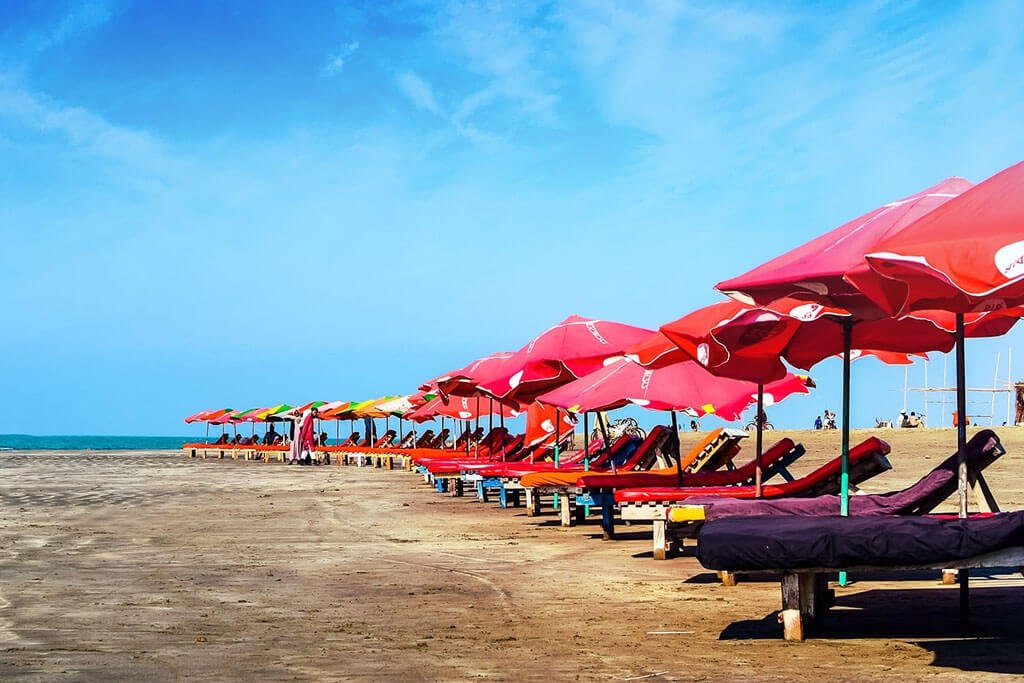
Cox’s Bazar is the leading tourist attraction in Bangladesh and ranks among the most beautiful coastal regions in South Asia. Referred to as the “Queen of Natural Beauty“, it features the longest uninterrupted sandy beach globally, extending more than 120 kilometers along the Bay of Bengal. Each year, millions of both local and international visitors flock to Cox’s Bazar to experience the stunning sights of sunrise and sunset, the soothing waves, and the invigorating sea breeze.
Natural Beauty & Charm
Cox’s Bazar’s primary allure lies in its infinite stretches of golden sand, azure waters, and breathtaking sunsets. The serene and natural environment offers an ideal retreat for both relaxation and adventure. The beach’s gentle surf and soft sands are perfect for leisurely strolls, sunbathing, and swimming.
As evening falls, the sun descends, casting hues of orange, red, and gold across the horizon — a sight that leaves a lasting impression on every visitor. The blend of beach life, hilly landscapes, and adjacent forests makes Cox’s Bazar a truly exceptional travel destination.
Top Tourist Attractions & Sightseeing Spots
Cox’s Bazar is full of amazing places to visit nearby. Here are the most popular tourist spots:
- Laboni Beach – The main and most crowded part of Cox’s Bazar, close to the town center.
- Inani Beach – Famous for its coral stones and crystal-clear water. It’s quieter and perfect for photography.
- Himchari National Park & Waterfall – A scenic spot surrounded by hills and forests, known for its natural waterfall and panoramic sea view from the top.
- Marine Drive Road – One of the most beautiful coastal roads in the world, connecting Cox’s Bazar with Teknaf through stunning sea and mountain views.
- Sugandha Beach – Perfect for watching sunsets and enjoying local food from beachside stalls.
- Doria Nagar Beach – Ideal for quiet moments and sunrise watching.
- Ramu Buddhist Temple – A small Buddhist village with pagodas, monasteries, and ancient religious statues.
- Maheshkhali Island – A small island accessible by boat, famous for the Adinath Temple and salt fields.
- Saint Martin’s Island (via Teknaf) – A coral paradise, just a few hours’ boat ride from Teknaf — a must-visit extension of any Cox’s Bazar trip.
- Radiant Fish Market – For visitors interested in buying dried fish, shells, and handmade souvenirs.
How to Go to Cox’s Bazar from Dhaka
Getting to Cox’s Bazar from Dhaka is now very easy, with several travel options available:
➤ By Air (Fastest & Easiest)
- Several airlines operate daily flights from Dhaka to Cox’s Bazar Airport.
- Flight duration: 1 hour
- Airlines: Biman Bangladesh Airlines, US-Bangla Airlines, Novoair, Air Astra.
- The airport is only 15–20 minutes away from the main beach area.
➤ By Bus (Affordable Option)
- Luxury AC buses leave daily from Gabtoli, Kolabagan, Fakirapool, and Saidabad bus terminals in Dhaka.
- Popular bus companies: Green Line, Shohag, Saintmartin Hyundai, Hanif, ENA, Saudia.
- Duration: 10–12 hours
- Buses usually travel overnight and reach Cox’s Bazar early in the morning.
➤ By Train + Bus Combination
- Take a train from Dhaka to Chittagong, then a local bus or microbus to Cox’s Bazar.
- Trains: Sonar Bangla, Subarna Express, Mahanagar Godhuli, etc.
- Chittagong to Cox’s Bazar by road takes around 4–5 hours.
- (Note: Direct Dhaka–Cox’s Bazar train service is under construction and expected soon.)
Where to Stay
Cox’s Bazar offers thousands of hotels and resorts for every budget:
- Luxury: Sayeman Beach Resort, Royal Tulip Sea Pearl Beach Resort, Long Beach Hotel.
- Mid-Range: Hotel The Cox Today, Praasad Paradise, Sea Crown.
- Budget: Ocean Paradise Guest House, Beach View Inn.
Most hotels are located near Laboni Point and Sugandha Beach, offering easy beach access.
Why Visit Cox’s Bazar
- World’s longest sandy beach
- Breathtaking sunsets and sunrises
- Perfect mix of sea, hills, and forests
- Friendly local people and delicious seafood
- Easy to reach and well-developed tourist facilities
Top 20 Best Hotel In Cox’s Bazar & Contact Number
Sundarbans Mangrove Forest – The Pride of Bangladesh
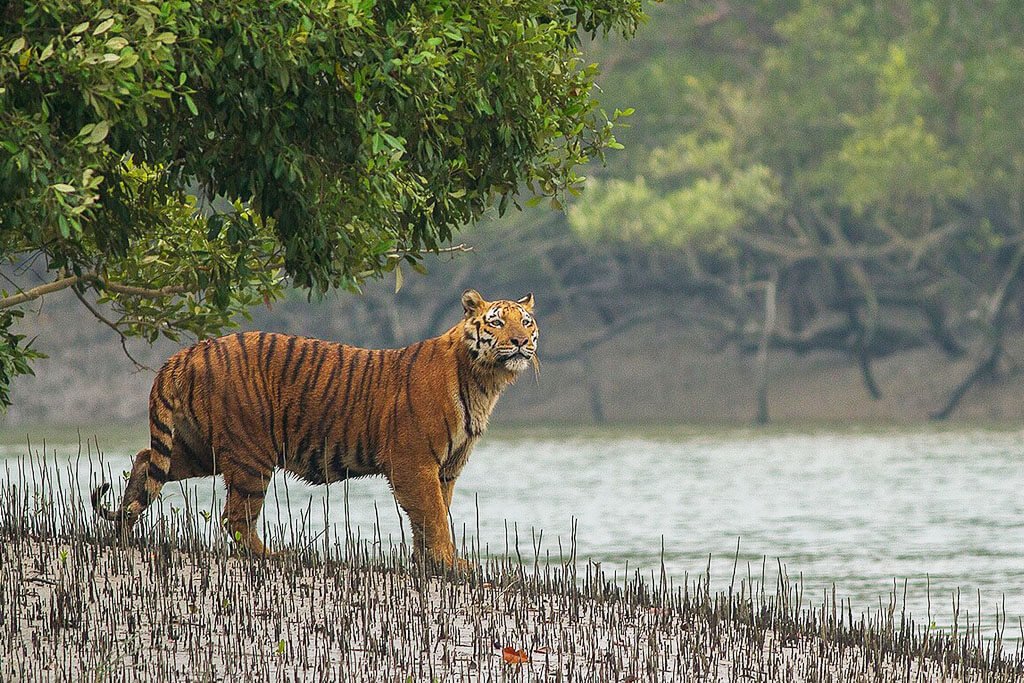
The Sundarbans Mangrove Forest stands as one of the most remarkable natural wonders globally and is the largest mangrove forest on the planet. Located in the southwestern part of Bangladesh, this UNESCO World Heritage Site hosts the magnificent Royal Bengal Tiger, various rare wildlife species, and stunning natural landscapes.
The term “Sundarban” translates to “beautiful forest,” and it certainly fulfills this description. Adorned with meandering rivers, tidal streams, small islands, and lush greenery — the Sundarbans represents an enchanting realm where land and water coexist in perfect harmony.
Natural Beauty & Uniqueness
The Sundarbans is a paradise for nature lovers, photographers, and adventure seekers. Its charm lies in its mysterious atmosphere — where the sound of chirping birds mixes with the whisper of tidal waves and rustling leaves.
The forest’s beauty changes with the tides: at high tide, water covers the mangroves; at low tide, the muddy land emerges, exposing unique root systems called “breathing roots” (pneumatophores). The magical scenery, misty mornings, and glowing sunsets make the Sundarbans a truly unforgettable experience.
Wildlife & Biodiversity
The Sundarbans is one of the richest ecosystems in the world. It is not only the home of the Royal Bengal Tiger, but also a sanctuary for countless other species, including:
- Royal Bengal Tiger – The symbol of power and pride of Bangladesh.
- Saltwater Crocodiles – The largest reptiles in the world, found in the rivers and canals.
- Spotted Deer (Chital) – Found roaming in herds inside the forest.
- Snakes and Lizards – Various reptiles including pythons.
- Monkeys – Seen in groups along the riverside.
- Birds – Over 300 species including kingfishers, eagles, herons, and migratory birds.
- Aquatic Life – Fish, crabs, shrimps, and mudskippers add life to the watery ecosystem.
This forest is also a natural shield, protecting the southern coastal areas of Bangladesh from cyclones and tidal surges.
Top Tourist Attractions
There are several key tourist spots within the Sundarbans region that visitors can explore during a forest tour:
- Karamjol Wildlife Centre – A forest station near Mongla with a deer park and crocodile breeding center.
- Kotka Beach & Tiger Point – One of the most famous spots, known for wildlife watching, tiger footprints, and sea views.
- Kochikhali Wildlife Sanctuary – A calm area with mangrove canals, great for bird watching and spotting deer.
- Harbaria Eco-Tourism Spot – A short walking trail through the mangrove forest, suitable for quick visits.
- Dubla Island – Famous for its annual “Rash Mela” fair and traditional fishermen’s village.
- Hiron Point (Nilkamal) – A UNESCO-recognized wildlife sanctuary, ideal for watching crocodiles, deer, and sometimes tigers.
- Dublar Char – Known for fishing activities and scenic beauty near the Bay of Bengal.
- Karamjal Crocodile Farm – Great for families and children to learn about wildlife conservation.
How to Go to the Sundarbans from Dhaka
Traveling to the Sundarbans is a fascinating journey itself. You can reach the forest through Khulna, Mongla, or Satkhira — the main gateways to the Sundarbans.
➤ Step 1: Dhaka → Khulna / Mongla
Option 1: By Bus
- Luxury AC buses run daily from Dhaka (Gabtoli, Saidabad, or Kalabagan) to Khulna.
- Popular Bus Services: Shohag, Hanif, Green Line, Desh Travels, etc.
- Duration: 7–8 hours
Option 2: By Train
- Take a train from Dhaka to Khulna (e.g., Sundarban Express or Chitra Express).
- Duration: 8–9 hours
Option 3: By Launch (Boat)
- You can take a launch from Dhaka to Khulna via river route.
- Duration: 10–12 hours, but it’s a scenic and peaceful journey.
➤ Step 2: Khulna / Mongla → Sundarbans Forest
From Khulna or Mongla, you must travel by engine boat, trawler, or luxury launch (through an authorized tour operator).
- Tour Duration: 1 to 3 days (depending on package)
- Starting Points: Mongla Port or Khulna Launch Ghat
- Entry Permits: Required from the Forest Department (usually arranged by the tour operator)
Best Time to Visit the Sundarbans
- October to March – The best season (dry and cool weather)
- Avoid June–August – The monsoon season, when heavy rain and storms are common
Tips for Tourists
- Always book with a licensed tour operator
- Wear light, long-sleeved clothing (for sun and mosquito protection)
- Carry binoculars and cameras
- Avoid feeding animals
- Respect nature and local culture
Why Visit the Sundarbans
- World’s largest mangrove forest
- Home of the Royal Bengal Tiger
- Paradise for birdwatchers and photographers
- Serene boat rides through tidal canals
- Magical sunsets over rivers and forest lines
- Peaceful, untouched natural beauty
Sylhet / Sreemangal (Tea Gardens & Forests)
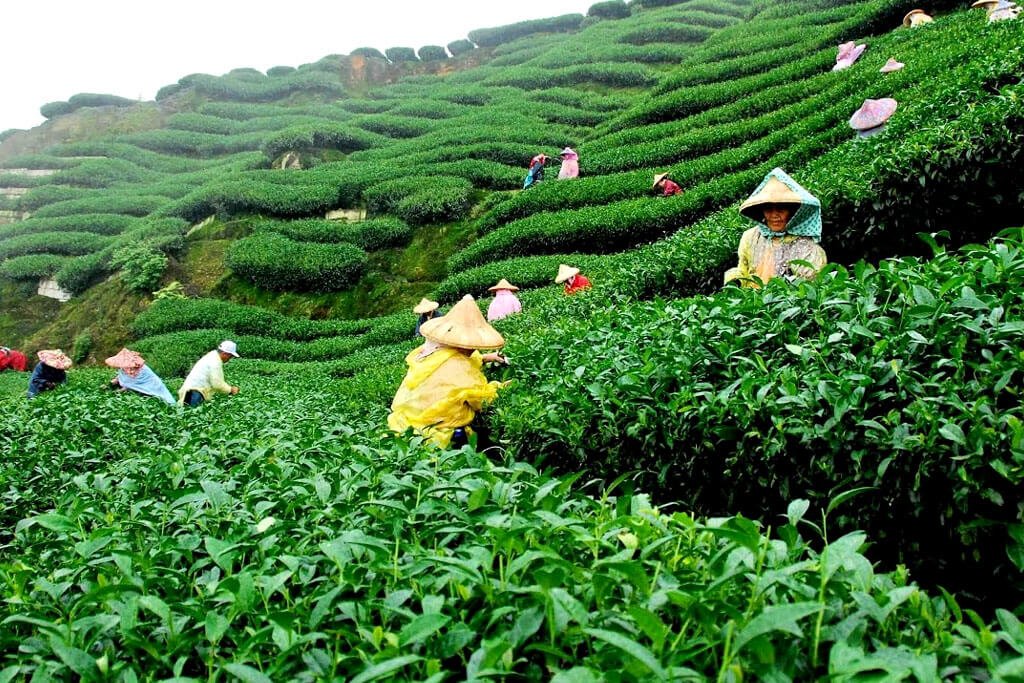
Sylhet, situated in the northeastern region of Bangladesh, is referred to as the “Land of Tea, Hills, and Natural Beauty.” The area, together with Srimangal, is renowned globally for its verdant tea plantations, undulating green hills, rainforests, and pristine rivers. It is considered one of the most scenic and tranquil locations in the nation — frequently dubbed “The Green Capital of Bangladesh.”
Natural Beauty & Charm
Sylhet and Srimangal together present a unique landscape that cannot be found anywhere else in Bangladesh. Endless tea gardens blanket the hills like a lush green carpet, with women elegantly harvesting tea leaves beneath the warm golden sun.
The crisp mountain air, the melodious chirping of birds, and the soothing sound of flowing streams transform Sylhet into a magical retreat from urban life. Srimangal, often referred to as the ‘Tea Capital of Bangladesh’, enhances the allure with its lush forests, wildlife reserves, and tranquil rural ambiance.
Misty mornings, leaves glistening with dew, and picturesque sunsets over the tea valleys render this area a photographer’s dream and a traveler’s haven.
Top Tourist Attractions & Seeing Sites
Both Sylhet City and Sreemangal have plenty of amazing tourist spots for nature lovers, adventurers, and spiritual travelers.
In Sylhet:
- Ratargul Swamp Forest – The only swamp forest in Bangladesh, where you can explore by boat through submerged trees — often called the “Amazon of Bangladesh.”
- Jaflong – A breathtaking area on the border with India, famous for its rolling stones, clear river water, and mountain backdrop.
- Bichanakandi – A crystal-clear river flowing through layers of stone and surrounded by mountains. It’s an ideal place for swimming and photography.
- Lalakhal – A turquoise-blue river with boat rides through the hills.
- Hazrat Shahjalal & Shah Paran Shrines – Sacred religious sites visited by thousands of pilgrims each year.
- Panthumai Waterfall – A stunning waterfall flowing from the Meghalaya Hills (visible from the Bangladesh side).
- Bisnakandi Hills & River View – A scenic picnic spot surrounded by mountain views and flowing river streams.
In Srimangal:
- Lawachara National Park – A tropical rainforest home to rare animals, including the endangered Hoolock Gibbon, and walking trails surrounded by dense jungle.
- Tea Gardens – Srimangal is surrounded by endless tea estates like Finlay Tea Estate and Madhabpur Tea Estate — ideal for scenic walks and photos.
- Madhabpur Lake – A peaceful, blue-water lake surrounded by hills and gardens — a perfect spot for boating and watching migratory birds.
- Baikka Beel (Wetland Sanctuary) – A paradise for bird watchers, home to thousands of local and migratory birds.
- Nilkantha Tea Cabin – Famous for its “Seven Layer Tea”, a unique drink invented in Srimangal.
- Hum Hum Waterfall – A hidden natural waterfall deep inside the forest, perfect for adventurous travelers and hikers.
How to Go to Sylhet & Sreemangal from Dhaka
Getting to Sylhet and Srimangal from Dhaka is very easy, with multiple transport options available.
➤ By Train (Comfortable & Scenic)
- Trains to Sylhet: Parabat Express, Joyantika Express, Upaban Express, Kalni Express.
- Trains to Srimangal: Same trains stop at Srimangal station.
- Duration:
- Dhaka → Srimangal → 5–6 hours
- Dhaka → Sylhet → 6–7 hours
- Starting Point: Kamalapur or Airport Railway Station in Dhaka.
➤ By Bus (Day & Night Service)
- AC and Non-AC buses depart daily from Gabtoli, Mohakhali, and Saidabad bus terminals.
- Popular companies: Ena, Hanif, Green Line, Shyamoli, London Express.
- Duration:
- Dhaka → Sylhet → 6–7 hours
- Dhaka → Srimangal → 5–6 hours
➤ By Air (Fastest Option)
- Daily flights from Dhaka → Sylhet Osmani International Airport by Biman Bangladesh, Novoair, Air Astra, and US-Bangla.
- Flight duration: 40–45 minutes
- From Sylhet, Srimangal is around 2–3 hours by car or bus.
Where to Stay
Both Sylhet and Sreemangal have hotels and resorts for all budgets:
In Sylhet:
- Rose View Hotel
- Hotel Noorjahan Grand
- Nazimgarh Resorts
- Budget: Hotel Holy Gate, Hotel Star Pacific
In Srimangal:
- Grand Sultan Resort & Spa
- Tea Heaven Resort
- DuSai Resort & Spa (luxury eco-resort)
- Budget: Sky Park Resort, Green Leaf Guest House
Why Visit Sylhet & Sreemangal
- Rolling tea gardens and green hills
- Wildlife sanctuaries and rainforests
- Peaceful rivers, lakes, and waterfalls
- World-famous “Seven Layer Tea”
- Historical & religious shrines
- Calm, clean, and relaxing environment
Bandarban & Chittagong Hill Tracts – The Land of Hills, Rivers & Clouds
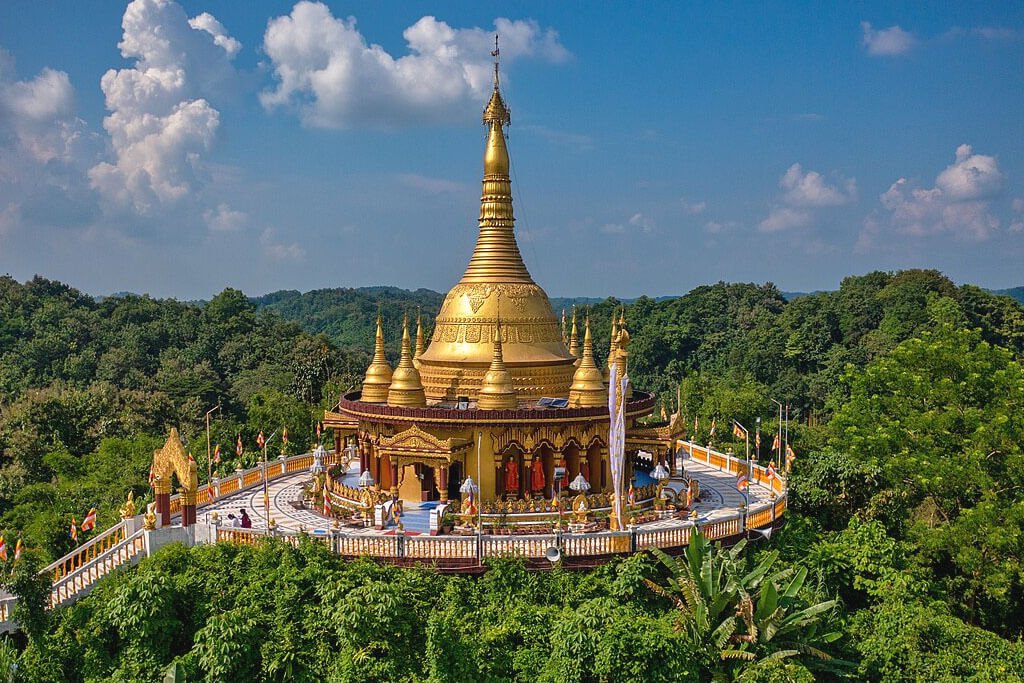
Bandarban, situated in the Chittagong Hill Tracts (CHT) of southeastern Bangladesh, is frequently referred to as the “Switzerland of Bangladesh.” It is characterized by undulating green hills, enigmatic valleys, cascading waterfalls, indigenous villages, and a calming natural silence.
As one of the most picturesque districts in the nation, Bandarban features clouds that embrace the hilltops, rivers that meander through profound valleys, and the symphony of nature that fosters a serene atmosphere. It serves as an ideal destination for those who appreciate nature, seek adventure, and desire tranquility.
The Beauty of Bandarban & Chittagong Hill Tracts
The Chittagong Hill Tracts, which include Bandarban, Rangamati, and Khagrachari, represent the sole hilly area in Bangladesh. Among these, Bandarban is particularly notable for its pristine natural beauty, rich tribal culture, and stunning landscapes.
Enveloped in lush forests and encircled by mountains, Bandarban provides a refreshing escape from the hustle and bustle of urban life. The air is clean, the sky is bright, and the hills are vibrant with waterfalls, lakes, and tribal communities that embody a simple yet vibrant lifestyle.
The allure of this area is found in its tranquility — where one can witness the sunrise from a hilltop, stroll through a tribal village, or listen to the gentle flow of the Sangu River as clouds float overhead.
Top Tourist Attractions & Seeing Sites in Bandarban
There are countless places to explore in Bandarban — each with its own unique charm and breathtaking views.
1. Nilgiri Hill
- One of the highest tourist spots in Bangladesh (around 2,200 feet).
- Famous for its sea of clouds, sunrise & sunset views, and peaceful environment.
- The Bangladesh Army operates a resort here with excellent facilities.
2. Nilachal
- Known as the “Darjeeling of Bangladesh.”
- Located only 5 km from Bandarban town.
- Offers panoramic views of mountains, valleys, and floating clouds — ideal for photography.
3. Boga Lake
- A natural lake located 3,000 feet above sea level.
- Surrounded by mountains and tribal villages, it’s one of the most magical spots in Bangladesh.
- Perfect for camping and stargazing at night.
4. Shoilo Propat Waterfall
- A famous natural waterfall on the way to Thanchi.
- The sound of rushing water and the beauty of the surrounding hills make it a popular tourist stop.
5. Nafakhum Waterfall
- Often called the “Niagara Falls of Bangladesh.”
- Located near Remakri in Thanchi, it’s one of the largest and most beautiful waterfalls in the country.
- The adventurous journey to reach Nafakhum through the Sangu River by boat makes it unforgettable.
6. Golden Temple (Buddha Dhatu Jadi)
- The largest Buddhist temple in Bangladesh, located on a hilltop near Bandarban town.
- Known for its golden architecture and spiritual atmosphere.
- Offers an incredible view of the surrounding hills and the Sangu River.
7. Chimbuk Hill
- The third-highest mountain in Bangladesh.
- Offers thrilling jeep rides and breathtaking panoramic views of the surrounding hills.
8. Sangu River
- The only river in Bangladesh that flows from the hills to the plains.
- A boat ride along this river offers spectacular views of hills, forests, and tribal villages.
9. Tribal Villages
- Bandarban is home to many indigenous communities such as Marma, Tripura, Bawm, Mro, and Chakma.
- Tourists can experience their culture, food, and traditional crafts.
Best Time to Visit
- October to March – Cool, dry weather with clear skies and stunning views.
- April to September – The monsoon season brings lush greenery and flowing waterfalls (best for photographers).
How to Go to Bandarban from Dhaka
Traveling from Dhaka to Bandarban is easy and well-connected.
By Bus (Most Common Way)
- Several luxury and non-AC buses run daily from Dhaka to Bandarban.
- Starting points: Gabtoli, Kalabagan, or Fakirapool Bus Terminals.
- Duration: 8–10 hours (overnight journey recommended).
- Popular Bus Services:
- Green Line, Hanif, Shyamoli, S Alam, Saintmartin Hyundai, Ena
By Train
- Take a train from Dhaka to Chittagong (e.g., Subarna Express, Mahanagar Express).
- Then take a bus or microbus from Chittagong to Bandarban (around 3–4 hours).
By Air
- Fly from Dhaka → Chittagong (flight time: 45 minutes)
- Then travel by road from Chittagong → Bandarban (around 90 km / 3–4 hours).
Where to Stay
Resorts & Hotels in Bandarban:
- Nilgiri Resort (Army-operated)
- Hillside Resort
- Hotel Plaza Bandarban
- Sairu Hill Resort (luxury eco-resort)
- Budget: Hotel Greenhill, Hotel Hill View, Parjatan Motel
Why Visit Bandarban & the Chittagong Hill Tracts
- Peaceful hill stations with panoramic mountain views
- Spectacular waterfalls, lakes, and rivers
- Adventure trekking, camping & boat trips
- Deep connection with nature and local tribal life
- Cloud-covered mornings and golden sunsets
Rangamati & Kaptai Lake – The Lake Paradise of Bangladesh
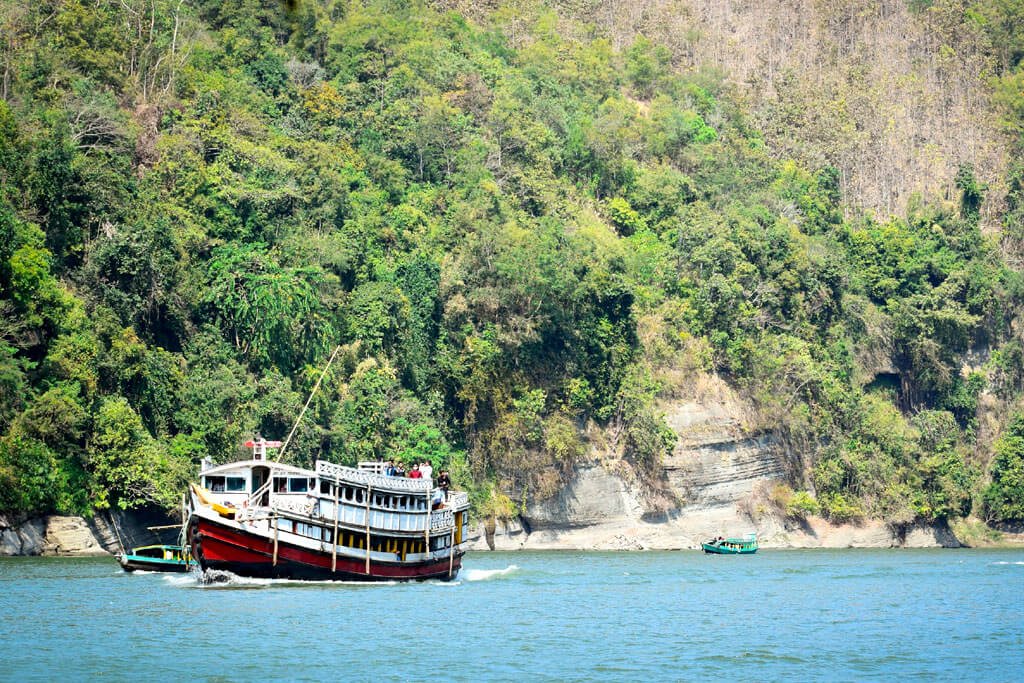
Rangamati, often referred to as the “Lake City of Bangladesh“, is among the most stunning and tranquil hill districts located in the Chittagong Hill Tracts. It is enveloped by lush green hills, expansive blue lakes, indigenous villages, suspension bridges, and peaceful forests.
At the heart of this captivating district lies Kaptai Lake — the largest artificial lake in Bangladesh — which contributes a magical allure to the scenery. With its serene blue waters mirroring the sky and mountains, Rangamati presents an ideal blend of natural beauty, cultural richness, and adventure.
Natural Beauty of Rangamati & Kaptai Lake
Rangamati is renowned for its lush hills, pristine waters, and invigorating mountain air. The whole district is centered around Kaptai Lake, which was formed in the 1960s following the construction of the Kaptai Dam on the Karnaphuli River.
The lake features numerous small islands adorned with forests, villages, and fruit orchards. Boat excursions across the lake offer stunning vistas — sunlight sparkling on the water, birds soaring overhead, and tribal homes quietly lining the shore.
In the early hours, mist hovers over the water, and during the evening, the golden sunset casts reflections on the lake — crafting an unforgettable sight. Rangamati is also celebrated for its tranquil ambiance and the welcoming tribal communities such as Chakma, Marma, Tripura, and Tanchangya — who coexist harmoniously with nature.
Top Tourist Attractions & Seeing Sites
There are countless scenic spots and cultural places to explore in Rangamati and around Kaptai Lake. Here are the most popular ones-
Kaptai Lake
- The main attraction — a vast blue lake surrounded by green hills.
- You can enjoy boat cruises, fishing, swimming, and picnics on the islands.
- Small wooden boats are available for day-long lake tours to nearby islands and waterfalls.
Hanging Bridge (Jhulonto Bridge)
- The iconic symbol of Rangamati, located near the Parjatan Holiday Complex.
- It’s a 335-foot-long bridge built over the lake — offering a fantastic view for photos and sunset watching.
Shuvolong Waterfall
- One of the most beautiful waterfalls in the region, accessible only by boat.
- The journey itself is an adventure — through winding lake routes, small islands, and green forests.
Polwel Park
- A family-friendly tourist spot beside the lake with walkways, rest areas, and picnic spots.
- Ideal for an evening stroll or a short break during your tour.
Kaptai National Park
- A natural forest reserve offering trekking trails, wildlife, and panoramic lake views.
- Great for eco-tourism and nature photography.
Tribal Handicraft Market (Banarupa Bazar)
- Famous for locally made handwoven clothes, bamboo crafts, tribal jewelry, and wooden items.
- Perfect place to buy unique souvenirs.
Rajban Bihar Pagoda
- A serene Buddhist temple complex located on the lake’s edge.
- Surrounded by hills and trees, it’s a peaceful place for meditation and photography.
Kaptai Dam
- The country’s largest hydroelectric dam — offering a panoramic view of the lake and surrounding hills.
Chakma Rajbari (Chakma King’s Palace)
- Historical residence of the Chakma royal family — a beautiful structure reflecting local culture and history.
DC Bungalow Hill Point
- Offers a breathtaking panoramic view of Kaptai Lake and its islands.
- A perfect place to relax and enjoy the natural beauty of Rangamati.
How to Go to Rangamati from Dhaka
Traveling to Rangamati from Dhaka is quite easy and enjoyable. You can reach it by bus, train + bus, or air (via Chittagong).
By Bus (Most Convenient)
- Direct AC and Non-AC buses run daily from Dhaka to Rangamati.
- Starting points: Gabtoli, Kalabagan, Fakirapool, or Saidabad Bus Terminals.
- Duration: 7–9 hours (depending on traffic and weather).
- Popular Bus Services:
- Green Line Paribahan
- Ena Transport
- Shyamoli Paribahan
- Hanif Enterprise
By Train + Bus
- Step 1: Take a train from Dhaka → Chittagong (e.g., Subarna Express, Mahanagar Express).
- Step 2: From Chittagong, take a local bus or microbus to Rangamati (about 77 km / 2–3 hours).
By Air
- Step 1: Take a flight from Dhaka → Chittagong (45 minutes).
- Step 2: Travel from Chittagong → Rangamati by bus, car, or microbus (2–3 hours).
Where to Stay
- Parjatan Holiday Complex (Government-run, scenic lake view)
- Lake View Island Resort
- Hotel Green Castle
- Eco Cottage Rangamati
- Hillside Resort & Restaurant
- Budget Options: Banarupa Rest House, Hotel Sufia, local guesthouses
Most hotels are located close to the lake area, offering balconies with stunning views of Kaptai Lake and the surrounding hills.
Why Visit Rangamati & Kaptai Lake
- The largest lake in Bangladesh with endless scenic beauty
- Peaceful hill landscapes perfect for relaxation
- Unique boat rides through calm blue waters
- Rich tribal culture and traditional crafts
- Majestic waterfalls, hanging bridges & island life
- A perfect mix of adventure and tranquility
St. Martin’s Island – The Coral Paradise of Bangladesh
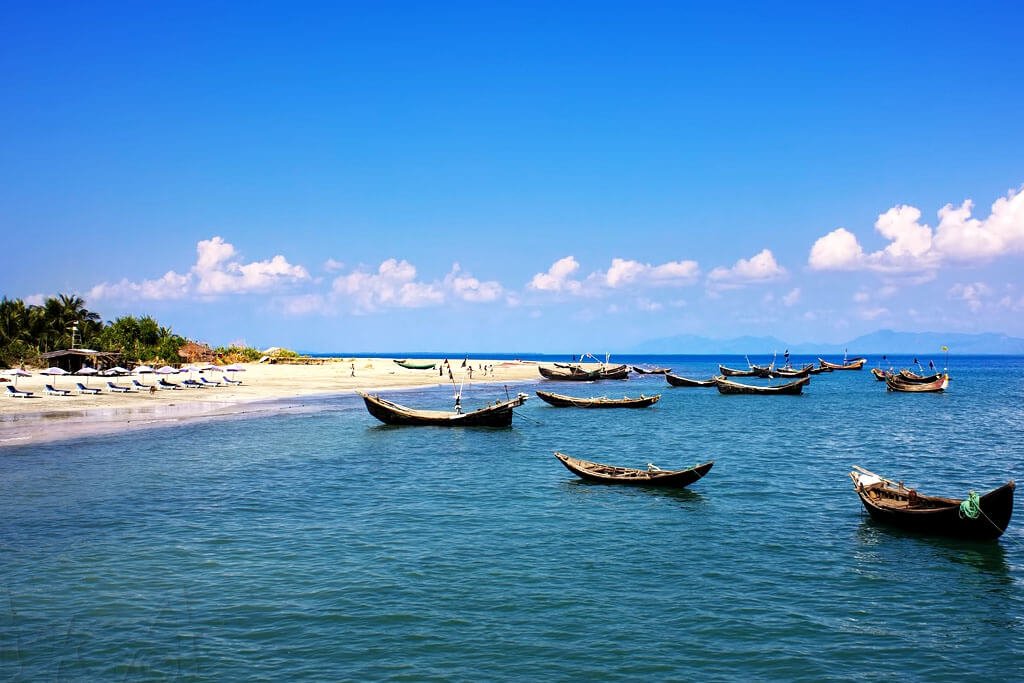
St. Martin’s Island, known locally as “Narikel Jinjira”, is the sole coral island in Bangladesh — a serene tropical haven situated in the southernmost region of the country, within the Bay of Bengal. This island is among the most stunning and peaceful tourist spots in Bangladesh, endowed with crystal-clear blue waters, coral reefs, coconut palms, and a soothing island ambiance.
Surrounded by turquoise waves and coral beds, the island showcases nature in its most pristine state. It is an ideal location for beach enthusiasts, adventure lovers, and anyone wishing to enjoy the tranquil aspects of the sea.
Natural Beauty of St. Martin’s Island
The allure of St. Martin’s Island is unparalleled in Bangladesh. Imagine being on a soft, white sandy beach, where the sunrise illuminates one side and the sunset colors the other — all while the gentle waves shimmer in the sunlight.
The crystal-clear blue sea, vibrant corals, tropical coconut palms, and the refreshing sea breeze create an atmosphere reminiscent of paradise on Earth.
During the day, the water glistens in emerald blue, and at night, beneath the starry sky, you can only hear the soothing sound of the waves. The unpretentiousness of island life, paired with its natural beauty, makes St. Martin’s a perfect getaway for anyone who appreciates nature.
Top Tourist Attractions & Seeing Sites in St. Martin’s Island
Although it’s a small island (only 8 square kilometers), there are plenty of beautiful places to explore and enjoy.
1. Main Beach (West Beach)
- The most popular part of the island — perfect for swimming, sunbathing, and walking along the seashore.
- Local cafes and shops sell fresh coconuts and seafood.
2. Chhera Dwip (Chhera Island)
- A small extension of St. Martin’s Island, separated by the tide.
- You can walk or take a boat there during low tide.
- Famous for its colorful corals, clear blue water, and peaceful environment — a must-visit spot for nature lovers and photographers.
3. Blue Lagoon Area
- The most photogenic part of the island with clear turquoise water.
- Great for swimming and snorkeling (during calm sea conditions).
4. Coral Reefs
- Located mainly on the southern and eastern sides of the island.
- Home to small fish, shells, and living corals (best seen during low tide).
- Visitors should avoid touching or collecting coral to preserve the ecosystem.
5. Fishing Villages
- You can visit local fishing areas to see how islanders catch and dry fish traditionally.
- Offers a glimpse of simple and hardworking island life.
6. Sunrise & Sunset Points
- Sunrise can be enjoyed from the eastern beach, while sunset looks magical from the western coast.
- The view of the sun melting into the sea is simply unforgettable.
7. Seafood Restaurants & Coconut Gardens
- Local restaurants serve fresh lobsters, crabs, and fish.
- Try coconut water from the countless trees — the sweetest you’ll find anywhere in Bangladesh!
How to Go to St. Martin’s Island from Dhaka
Getting to St. Martin’s Island from Dhaka is a two-step journey — by road or air to Teknaf, then by ship or trawler to the island.
Option 1: By Bus (Dhaka → Teknaf → St. Martin’s)
- Take an overnight AC or Non-AC bus from Dhaka to Teknaf.
- Bus services: Green Line, Saintmartin Hyundai, Hanif, Shyamoli, and Ena.
- Duration: 10–12 hours.
- Starting points: Gabtoli, Fakirapool, or Saidabad terminals.
- From Teknaf, take a ship or launch to St. Martin’s Island.
- Ships operate between November and March (tourist season).
- Duration: 2–3 hours (via the Naf River & Bay of Bengal).
- Popular Ships: Keari Sindbad, Atlantic Cruise, Karnafuly Express.
- Ships usually leave Teknaf around 9:00 AM and return from St. Martin’s at 3:00 PM.
Option 2: By Air (Dhaka → Cox’s Bazar → Teknaf → St. Martin’s)
- Take a flight from Dhaka to Cox’s Bazar (1 hour).
- From Cox’s Bazar, travel by microbus or car to Teknaf (approx. 85 km / 2–3 hours).
- Then take a ship or trawler from Teknaf → St. Martin’s Island.
Where to Stay
St. Martin’s Island has several beautiful hotels, eco-cottages, and resorts — from luxury stays to budget options.
- Blue Marine Resort
- Coral View Resort
- Sea Pearl Beach Resort
- Fantasy Hotel & Resort
- Budget Options: Dream Night Resort, Sunset Serenity, local homestays
Best Time to Visit
- November to March – The perfect season to visit (calm sea, clear sky, pleasant weather).
- Avoid April to September – Monsoon season with high waves and no ship service.
Why Visit St. Martin’s Island
- Only coral island in Bangladesh
- Crystal-clear blue sea & white sandy beaches
- Magical sunrise and sunset views
- Amazing marine life & coral reefs
- Peaceful, pollution-free, and full of natural beauty
- Delicious fresh seafood & coconuts
Mosque City of Bagerhat – The Lost City of Mosques
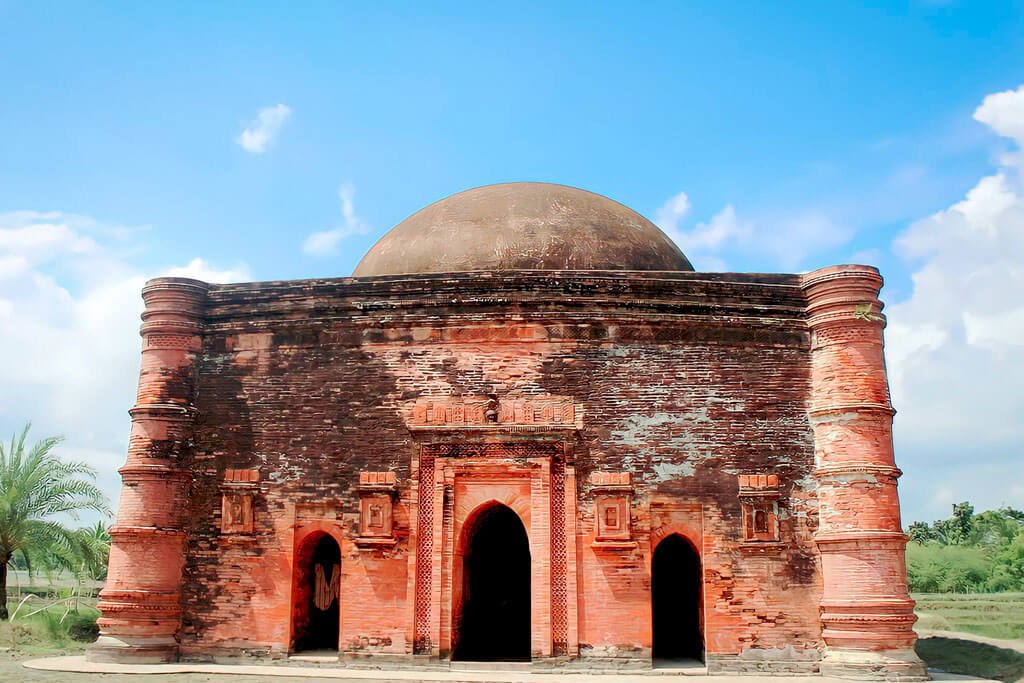
The Mosque City of Bagerhat, situated in the Khulna Division of southern Bangladesh, is recognized as a UNESCO World Heritage Site and is considered one of the nation’s most significant historical assets. Referred to as the “City of a Million Mosques”, Bagerhat was established in the 15th century by Khan Jahan Ali, a saint and military leader who brought Islam and urban development to the area.
This historic city is renowned for its stunning Islamic architecture, red terracotta mosques, stone carvings, and the tranquil environment that reflects the splendor of medieval Bengal. Today, Bagerhat exists as a living museum — an ideal combination of spiritual legacy, architectural excellence, and natural beauty.
Historical & Architectural Beauty
The Mosque City of Bagerhat is more than just a site for worship — it is an architectural wonder that was constructed over 500 years ago. The entire city was designed by Ulugh Khan Jahan Ali, who erected numerous mosques, bridges, roads, ponds, and administrative buildings, employing ancient Mughal and Turkish architectural styles.
The mosques are primarily built with burnt red bricks, showcasing large domes, arched entrances, and intricate terracotta designs — each building narrating a tale of devotion and artistry. The layout of the city reflects an extraordinary degree of planning — featuring broad streets, public water reservoirs, and strategically located religious edifices. This positions Bagerhat as one of the earliest instances of Islamic urban planning in South Asia.
Top Tourist Attractions & Historical Sites in Bagerhat
Here are the main attractions to explore in the Mosque City of Bagerhat
Sixty Dome Mosque (Shat Gombuj Masjid)
- The most iconic and largest mosque in Bagerhat.
- Built by Khan Jahan Ali in the 15th century.
- Despite its name, it actually has 77 domes supported by 60 stone pillars.
- The interior feels cool and peaceful, with soft light filtering through narrow windows.
- Declared a UNESCO World Heritage Site for its historical and architectural value.
Nine Dome Mosque
- Located near the Thakur Dighi tank, this mosque features nine beautiful domes arranged in a perfect square.
- Its curved arches and fine terracotta detailing make it one of the most photogenic spots in Bagerhat.
Singair Mosque
- A small but beautifully preserved mosque with a single large dome and intricate ornamentation.
- It reflects the artistic skill of the builders of medieval Bengal.
Khan Jahan Ali’s Tomb
- The mausoleum of Saint Khan Jahan Ali — the founder of Bagerhat.
- Located beside a large pond known as Thakur Dighi.
- Pilgrims from all over Bangladesh visit this sacred site to pay their respects.
- The surroundings are quiet and filled with spiritual serenity.
Bibi Begni Mosque
- Built during the same period as the Shat Gombuj Mosque.
- Known for its small yet graceful structure, arched entrances, and decorative terracotta plaques.
Zinda Pir Mosque
- A less crowded but historically important site, located near Khan Jahan Ali’s Tomb.
- The mosque reflects the influence of Persian and Mughal architectural designs.
Dargah Complex & Thakur Dighi
- The Dargah area includes Khan Jahan Ali’s shrine, mosque, and a massive pond filled with sacred crocodiles.
- Tourists often feed the crocodiles with raw meat — a long-standing local tradition believed to bring blessings.
Chunakhola Mosque
- Another ancient mosque located a few kilometers away from the main heritage area.
- Known for its unique terracotta and plaster decorations.
Things to Do in Bagerhat
- Visit all major mosques and archaeological sites.
- Take a boat ride on nearby rivers and ponds.
- Watch the sunset from the Shat Gombuj Mosque area.
- Visit the crocodiles at Thakur Dighi (from a safe distance).
- Explore local bazaars for traditional food and crafts.
- Enjoy photography — Bagerhat is a paradise for history and architecture lovers.
How to Go to Bagerhat from Dhaka
Getting to Bagerhat is easy and comfortable — you can travel by bus, train + car, or launch (boat).
By Bus (Most Convenient)
- Daily AC and Non-AC buses travel from Dhaka to Bagerhat.
- Starting points: Gabtoli, Saidabad, or Kalabagan terminals.
- Duration: 6–8 hours.
- Popular Bus Services:
- Hanif Enterprise
- Shohag Paribahan
- Green Line
- Desh Travels
By Train
- Step 1: Take a train from Dhaka → Khulna (e.g., Sundarban Express, Chitra Express).
- Step 2: From Khulna Railway Station, travel by car, bus, or CNG to Bagerhat (approx. 30 km / 45 minutes).
By Launch (River Route)
- Step 1: Take an overnight launch from Dhaka → Khulna via the Padma River.
- Step 2: From Khulna Launch Terminal, travel to Bagerhat by road.
Where to Stay
- Hotel Al Amin (near Shat Gombuj Mosque)
- Hotel Royal International (Bagerhat town)
- Hotel Castle Salam (Khulna – 30 mins away)
- Tiger Garden International Hotel (Khulna)
- Budget: Parjatan Motel, local guest houses near Dargah Road
Why Visit the Mosque City of Bagerhat
- A UNESCO World Heritage Site rich in history and culture
- Home to ancient Islamic architecture from the 15th century
- Peaceful and spiritually inspiring surroundings
- Amazing terracotta artwork and stone craftsmanship
- Beautiful sunsets over the red-brick mosques and green fields
Paharpur (Somapura Mahavihara) – The Ancient Buddhist Monastery of Bengal
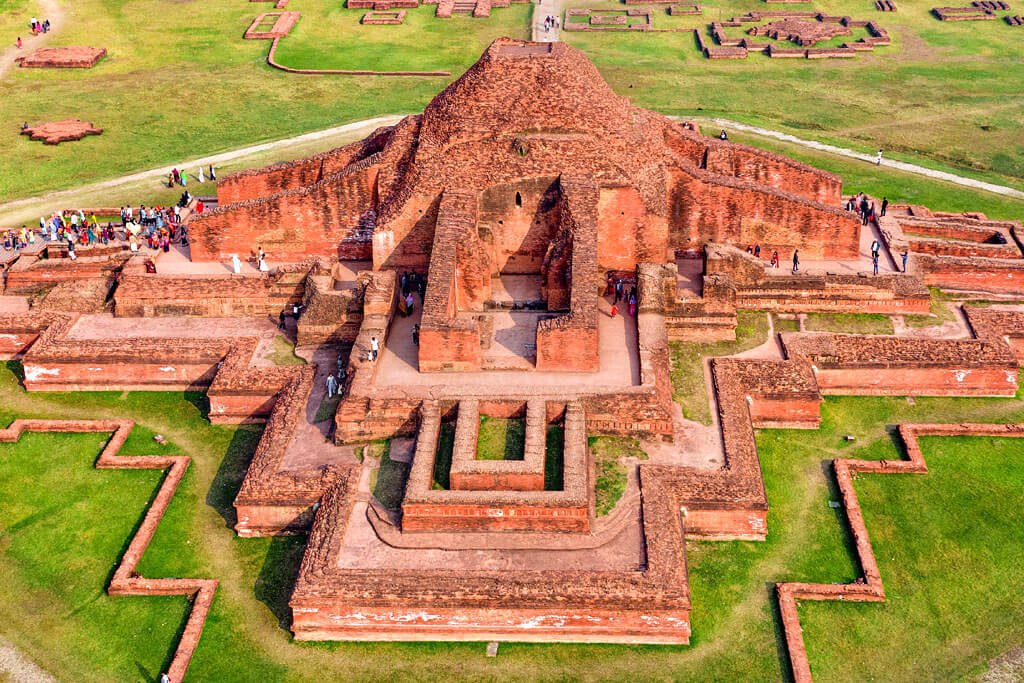
Paharpur, also referred to as Somapura Mahavihara, stands as one of the most significant and remarkable archaeological sites in Bangladesh — a location that embodies the illustrious history of ancient Bengal. Situated in the Naogaon District, this site has been designated by UNESCO as a World Heritage Site due to its exceptional architectural design and historical significance.
Originating from the 8th–9th century AD, this grand Buddhist monastery was among the largest and most impactful centers of learning in the ancient world, rivaling Nalanda and Taxila. The expansive ruins, detailed terracotta artwork, and serene environment render Paharpur a timeless gem — an exploration into the spiritual and intellectual core of ancient Bengal.
Historical Background
Somapura Mahavihara was founded by Dharma Pala, the second monarch of the Pala Dynasty, approximately in the 8th century. The Pala Empire was recognized for its support of Buddhism, art, and education — with Paharpur being one of its most significant accomplishments.
The monastery functioned as a hub for Buddhist learning, drawing scholars, monks, and students from various parts of Asia — including India, China, Tibet, and Southeast Asia. Archaeological excavations have uncovered that the site previously housed 177 monk cells, temples, courtyards, and libraries — demonstrating its significance as a vibrant monastic and educational center for many centuries.
Architectural Beauty of Somapura Mahavihara
The design of Paharpur represents a remarkable achievement in ancient engineering and architecture. At its heart is a large cross-shaped temple, encircled by a quadrangular courtyard featuring monastic cells on each of its four sides — creating a square enclosure that spans over 27 acres.
The main shrine, which is now in a state of ruin, ascends in pyramid-like terraces — originally standing approximately 70 feet tall — embellished with terracotta plaques, stone carvings, and decorative brickwork.
The terracotta plaques are among the site’s most beautiful features. They depict scenes from:
- Daily life (farmers, musicians, dancers)
- Animals and mythical creatures
- Religious symbols and floral designs
These designs showcase the artistic brilliance of the ancient Bengali craftsmen. Even today, walking through Paharpur feels like stepping back into a different world — surrounded by silence, history, and the whisper of ancient wisdom.
Top Attractions & Seeing Sites in Paharpur
When visiting Paharpur, travelers can explore several fascinating parts of the archaeological site and nearby areas:
Somapura Mahavihara Main Complex
- The main attraction — a vast ancient monastery surrounded by walls and monk quarters.
- Perfect for photography, walking, and exploring ancient ruins.
Central Temple Ruins
- The heart of the site, featuring a towering brick structure that once served as the main temple for meditation and worship.
- Offers a majestic view, especially during sunrise and sunset.
Terracotta Plaques & Museum
- The Paharpur Museum, located near the main entrance, preserves excavated artifacts such as pottery, coins, ornaments, inscriptions, and terracotta art.
- The terracotta plaques depict Buddhist stories and daily life scenes from 1,200 years ago.
Monk’s Quarters
- Surrounding the main shrine, you can still see small rooms where monks lived and studied.
- Walking through these ruins gives a glimpse into the quiet and disciplined life of ancient Buddhist scholars.
Nearby Historical Sites
- Mahasthangarh (Bogura) – Another famous archaeological site located a few hours away.
- Vasu Bihar (Rajshahi) – Ancient ruins related to Buddhist history, perfect for history lovers.
Best Time to Visit
- November to February (Winter Season): Pleasant weather for outdoor exploration.
- March to April: The surrounding fields bloom with flowers and greenery.
- Avoid June–September due to heavy rain and muddy conditions.
How to Go to Paharpur from Dhaka
Traveling to Paharpur is easy, with several options depending on comfort and time.
Option 1: By Train (Dhaka → Joypurhat / Naogaon)
- Take a train from Dhaka → Joypurhat (the nearest major station).
- Trains: Ekota Express, Drutojan Express, Nilsagar Express.
- Duration: 7–8 hours.
- From Joypurhat, Paharpur is about 15 km away — take a CNG, auto-rickshaw, or local bus (20–30 minutes).
Option 2: By Bus (Dhaka → Naogaon / Joypurhat)
- Buses leave from Gabtoli or Kalyanpur bus terminals in Dhaka.
- Duration: 6–8 hours.
- Bus services: Ena, Hanif, Desh Travels, National Travels.
- From Naogaon or Joypurhat, hire a local vehicle to reach Paharpur.
Option 3: Private Car / Microbus
- You can rent a private car or microbus from Dhaka to Paharpur.
- Distance: about 280 km (7–8 hours) via Tangail–Sirajganj–Naogaon highway.
- Ideal for family or group tours.
Where to Stay
While there are no large hotels directly in Paharpur, you can stay in Naogaon, Joypurhat, or Bogura, where several good hotels and guesthouses are available.
- Hotel Rajmoni, Naogaon
- Hotel North Bengal, Joypurhat
- Parjatan Motel, Bogura
- Budget: Local guesthouses near the Paharpur Museum area
Why Visit Paharpur (Somapura Mahavihara)
- UNESCO World Heritage Site
- Ancient Buddhist learning center — over 1,200 years old
- Stunning terracotta art and architecture
- Peaceful atmosphere, surrounded by fields and hills
- A must-visit for lovers of history, archaeology, and spirituality
Lalbagh Fort & Historical Sites of Dhaka
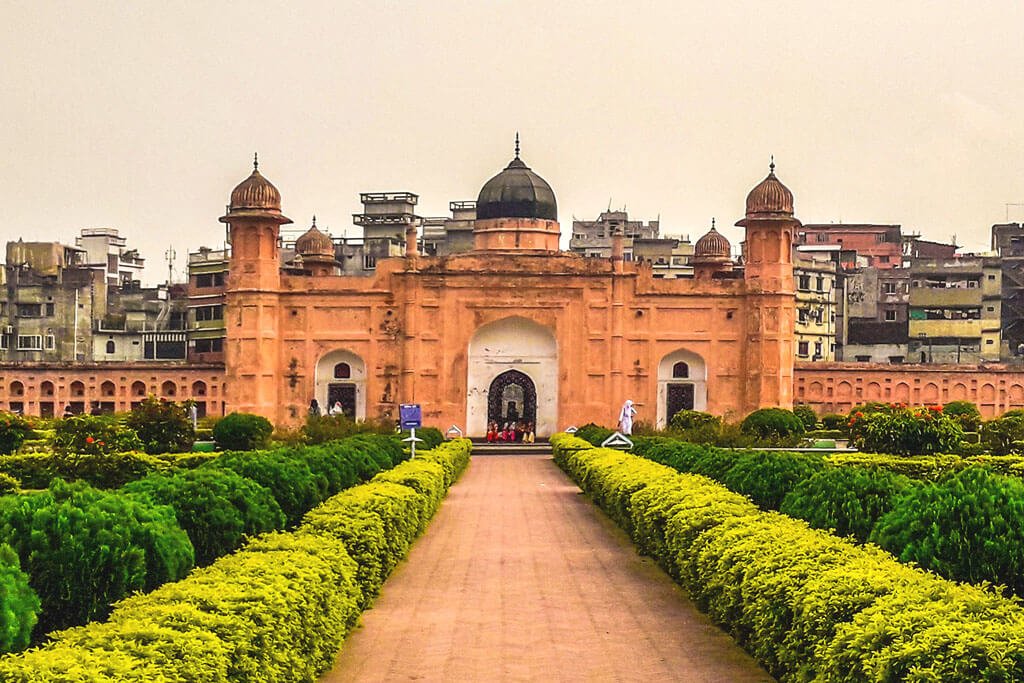
Dhaka, the capital of Bangladesh, is a vibrant modern city that also serves as a living museum showcasing its rich history and culture. Among its numerous historic sites, Lalbagh Fort is particularly notable — representing Mughal architecture, royal legacy, and enduring beauty.
The historical landmarks in Dhaka — such as Lalbagh Fort, Ahsan Manzil, Star Mosque, and Dhakeshwari Temple — narrate the tale of a city that was once the crown jewel of the Mughal Empire and a significant hub for trade, art, and religion in South Asia.
Lalbagh Fort – The Unfinished Mughal Wonder
Lalbagh Fort, also referred to as Fort Aurangabad, is an impressive Mughal fortress from the 17th century situated in the center of Old Dhaka, adjacent to the Buriganga River.
The fort’s construction commenced in 1678 AD under the direction of Prince Muhammad Azam, the son of Mughal Emperor Aurangzeb, during his tenure as the governor of Bengal. Unfortunately, the fort was never finished, as the prince was summoned back to Delhi, and his successor, Shaista Khan, halted the construction following the heartbreaking death of his daughter, Pari Bibi, who is interred within the fort.
Despite its incomplete state, Lalbagh Fort stands as one of the most stunning Mughal monuments in Bangladesh — a site where history, romance, and architecture beautifully converge.
Architectural Beauty of Lalbagh Fort
Lalbagh Fort is a masterpiece of Mughal architecture, built with red sandstone and bricks. The complex covers about 18 acres and includes several stunning structures, gardens, and water reservoirs.
Inside the fort, you can explore:
- Tomb of Pari Bibi – A marble-covered mausoleum with elegant white stone walls and intricate carvings.
- Diwan-i-Aam (Hall of Public Audience) – A grand building where the Mughal governor held meetings and official gatherings.
- Lalbagh Mosque – A three-domed Mughal-style mosque known for its symmetrical design and peaceful atmosphere.
- Lush Gardens & Fountains – Beautifully landscaped gardens that add serenity to the fort complex, ideal for walking and photography.
- Museum & Artifacts – The small museum inside displays Mughal-era weapons, coins, ceramics, and other relics from Dhaka’s golden past.
When the sunlight hits the red walls of the fort in the afternoon, it glows like a palace of fire — creating a breathtaking view.
Other Historical Sites to See in Dhaka
Beyond Lalbagh Fort, Dhaka is full of fascinating historical and cultural landmarks that showcase its rich heritage.
Ahsan Manzil (The Pink Palace)
- Located near the Buriganga River, this was the official residence of the Nawabs of Dhaka.
- Built in 1872, Ahsan Manzil’s Indo-Saracenic architecture and soft pink façade make it one of Dhaka’s most photographed landmarks.
- Now a museum, it displays royal furniture, portraits, and historical artifacts.
Star Mosque (Tara Masjid)
- A stunning 19th-century mosque in Armanitola, decorated with blue and white mosaic stars, hence the name “Star Mosque.”
- The entire interior is covered with delicate mosaic work using Japanese and English ceramic tiles — a rare artistic masterpiece.
Dhakeshwari Temple
- The national temple of Bangladesh and one of the oldest Hindu temples in Dhaka.
- The temple complex reflects traditional Hindu architecture and cultural harmony between religions in the old city.
Armenian Church of the Holy Resurrection
- Built in 1781 by the Armenian community in Armanitola.
- It remains one of the oldest Christian structures in Dhaka and showcases colonial-era architecture.
Hussaini Dalan
- A historical Shia shrine dating back to the Mughal period.
- Known for its peaceful ambience and beautifully arched gateways, especially vibrant during Muharram observances.
Curzon Hall
- Built during British colonial rule (1904), now part of the University of Dhaka.
- Famous for its Indo-Saracenic architecture with red-brick domes and arches — a favorite spot for visitors and photographers.
Bara Katra & Chhota Katra
- Two ancient Mughal caravanserais (inns) in Old Dhaka, built for traders and travelers.
- Though partly damaged, they still reflect the grandeur of Dhaka’s 17th-century architecture.
Sadarghat River Port
- One of the busiest river ports in the world.
- Offers a real glimpse into Dhaka’s daily life — colorful boats, ferries, and bustling markets.
- A great spot for photography and evening boat rides.
Best Time to Visit
- November to February – Comfortable and dry weather, perfect for sightseeing.
- March to April – Warm but ideal for early morning or late afternoon tours.
- Avoid June–September – The monsoon season brings heavy rainfall and waterlogging in Old Dhaka.
Where to Stay
- Pan Pacific Sonargaon Dhaka
- InterContinental Dhaka
- FARS Hotel & Resorts
- Hotel 71 (close to Lalbagh & Ahsan Manzil)
- Budget: Asia Hotel, Hotel Razmoni Ishakha
Most hotels are located in central Dhaka, within 15–30 minutes’ drive from the historical zone (Lalbagh, Ahsan Manzil, and Old Dhaka).
Why Visit Lalbagh Fort & Dhaka’s Historical Sites
- Rich Mughal and colonial history
- Exquisite architecture and terracotta artistry
- A blend of Islamic, Hindu, and European influences
- Perfect for photography and cultural exploration
- Experience the soul of Old Dhaka — its history, food, and people
Madhabkunda Waterfall – The Majestic Waterfall of Bangladesh
Madhabkunda Waterfall, situated in the Moulvibazar District of Sylhet Division, is recognized as the largest and most renowned waterfall in Bangladesh. It is a stunning natural marvel where water cascades from a height of approximately 200 feet, enveloped by verdant hills, rocks, and tea plantations.
The thunderous sound of the cascading water, the crisp mountain air, and the tranquil forest environment render Madhabkunda one of the most awe-inspiring tourist destinations in the nation. This location is not only a site of picturesque beauty but also a beloved spot for nature enthusiasts, hikers, and photographers, providing an ideal retreat from the hustle and bustle of urban life.
The Natural Beauty of Madhabkunda
Madhabkunda is renowned for its stunning landscapes — featuring towering cliffs, cascading waterfalls, and lush green forests. The waterfall is fed by the Patharia Hills, which belong to the Indian Meghalaya range. As the water cascades down, it generates a refreshing mist that invigorates visitors immediately.
The surroundings of the waterfall boast a rich natural diversity — filled with large boulders, bamboo thickets, and tropical vegetation. During the monsoon season, the stream intensifies, and the waterfall becomes even more magnificent, producing a powerful yet calming sound.
The entire atmosphere — the melodious chirping of birds, the soft breeze, and the sound of water splashing against the rocks — transforms Madhabkunda into a tranquil haven for travelers.
Top Attractions & Things to See in Madhabkunda
Madhabkunda Waterfall (Main Attraction)
- The tallest waterfall in Bangladesh (about 200 feet).
- Visitors can enjoy the sight of water crashing down from the mountain top into the deep rocky pool below.
- The best time to experience the full force of the waterfall is during the monsoon season (June–September).
Madhabkunda Eco Park
- Located around the waterfall area, this eco-park is maintained by the Forest Department.
- It features walking trails, picnic spots, and rest houses amidst scenic hills and greenery.
- The park is home to monkeys, colorful birds, and butterflies.
Tea Gardens & Forest Hills
- On the way to Madhabkunda, travelers pass through beautiful tea estates and rubber gardens — especially stunning in the early morning.
- The hills surrounding the waterfall area are perfect for short nature walks and photography.
Tribal Villages
- Nearby tribal villages (Khasia and Manipuri communities) offer a glimpse of traditional lifestyles and handmade crafts.
- Visitors can experience the ethnic culture and hospitality of the Sylhet region.
Mini Waterfalls and Streams
- Apart from the main fall, there are several smaller waterfalls and crystal-clear streams nearby, perfect for cooling your feet or relaxing after hiking.
Picnic & Photography Spots
- Madhabkunda is one of the most popular picnic destinations in Sylhet.
- The green hills and natural light make it an ideal location for photography and videography.
Best Time to Visit
- October to March (Winter Season): Best for sightseeing, hiking, and family picnics — calm weather and clear skies.
- June to September (Monsoon): The waterfall is at its most powerful and beautiful, but be cautious of slippery rocks.
- Avoid during heavy storms, as the area can become dangerous due to flooding or strong currents.
How to Go to Madhabkunda Waterfall from Dhaka
You can easily reach Madhabkunda from Dhaka by train, bus, or car.
Option 1: By Train (Dhaka → Kulaura → Madhabkunda)
- Take an intercity train from Dhaka → Kulaura Station (nearest railway station).
- Trains: Parabat Express, Jayantika Express, Upaban Express.
- Duration: 6–7 hours.
- From Kulaura, take a CNG, local bus, or private jeep to reach Madhabkunda Waterfall (around 20 km / 30–40 minutes).
Option 2: By Bus (Dhaka → Moulvibazar / Barlekha → Madhabkunda)
- Buses leave Dhaka for Moulvibazar, Srimangal, or Barlekha regularly.
- Bus operators: Ena, Hanif, London Express, or Green Line.
- Duration: 6–8 hours.
- From Moulvibazar or Barlekha, hire a CNG auto-rickshaw or microbus to reach Madhabkunda (30–45 minutes).
Option 3: By Private Car or Microbus
- The most comfortable way for families or tour groups.
- Distance from Dhaka: around 350 km.
- Route: Dhaka → Sylhet Highway → Srimangal → Moulvibazar → Madhabkunda.
- Travel Time: 7–8 hours depending on traffic.
Where to Stay
There are no major hotels inside the waterfall area, but you can find excellent accommodation nearby.
- Hotel Sky Park (Moulvibazar)
- Grand Selim Resort & Spa (Srimangal)
- DuSai Resort & Spa (Luxury)
- Budget Options: Barlekha Rest House, Tea Heaven Inn
Why Visit Madhabkunda Waterfall
- The largest natural waterfall in Bangladesh
- Surrounded by green hills, forests, and tea gardens
- Perfect destination for peace, photography, and adventure
- Ideal for family picnics and nature exploration
- A place to relax and connect with nature
Thank you for reading our article Top Tourist Places in Bangladesh. If you have more information’s about it pls comment us bellow. People also searching – Tourist Places in Bangladesh, Top Tourist Places in Bangladesh, Best Tourist Attractions in Bangladesh, Places to Visit in Bangladesh, Top Tourist Places in Bangladesh, Bangladesh Tourist Spots, Best places to visit in Bangladesh, Famous tourist spots in Bangladesh, Top Tourist Places in Bangladesh, Historical places in Bangladesh to visit, Natural tourist places in Bangladesh, Top Tourist Places in Bangladesh, Tourist places in Bangladesh with family, Hill tracts tourist places in Bangladesh, Top Tourist Places in Bangladesh.
Beautiful places to see in Bangladesh, Top Tourist Places in Bangladesh, Offbeat tourist places in Bangladesh, Top Tourist Places in Bangladesh, Cox’s Bazar tourist places, Top Tourist Places in Bangladesh, Sundarbans tourist attractions, Top Tourist Places in Bangladesh, St Martin’s Island Bangladesh, Top Tourist Places in Bangladesh, Tourist places in Dhaka, Top Tourist Places in Bangladesh, Bandarban tourist spots, Top Tourist Places in Bangladesh, Srimangal tea garden tourism, Top Tourist Places in Bangladesh, Kuakata beach Bangladesh, Bagerhat historical sites.
Tourist Places in Bangladesh, Top Tourist Places in Bangladesh, Best Tourist Attractions in Bangladesh, Top Tourist Places in Bangladesh, Places to Visit in Bangladesh, Bangladesh Tourist Spots, Top Tourist Places in Bangladesh, Best places to visit in Bangladesh, Famous tourist spots in Bangladesh, Top Tourist Places in Bangladesh, Historical places in Bangladesh to visit, Natural tourist places in Bangladesh, Top Tourist Places in Bangladesh, Tourist places in Bangladesh with family, Hill tracts tourist places in Bangladesh, Top Tourist Places in Bangladesh.
What are the best tourist places in Bangladesh?, Top Tourist Places in Bangladesh, Where to visit in Bangladesh?, Top Tourist Places in Bangladesh, Things to see in Bangladesh, Top Tourist Places in Bangladesh, Bangladesh tourism guide, Top Tourist Places in Bangladesh, How many tourist places in Bangladesh?, Top Tourist Places in Bangladesh, Bangladesh travel guide, Top Tourist Places in Bangladesh, Bangladesh holiday destinations, Top Tourist Places in Bangladesh, Bangladesh nature tourism, Top Tourist Places in Bangladesh, Cultural heritage sites Bangladesh, Top Tourist Places in Bangladesh, Eco tourism in Bangladesh, Historic monuments in Bangladesh.
Tourist Places in Bangladesh, Top Tourist Places in Bangladesh, Best Tourist Attractions in Bangladesh, Places to Visit in Bangladesh, Top Tourist Places in Bangladesh, Bangladesh Tourist Spots, Top Tourist Places in Bangladesh, Best places to visit in Bangladesh, Famous tourist spots in Bangladesh, Top Tourist Places in Bangladesh, Historical places in Bangladesh to visit, Natural tourist places in Bangladesh, Top Tourist Places in Bangladesh, Tourist places in Bangladesh with family, Hill tracts tourist places in Bangladesh.

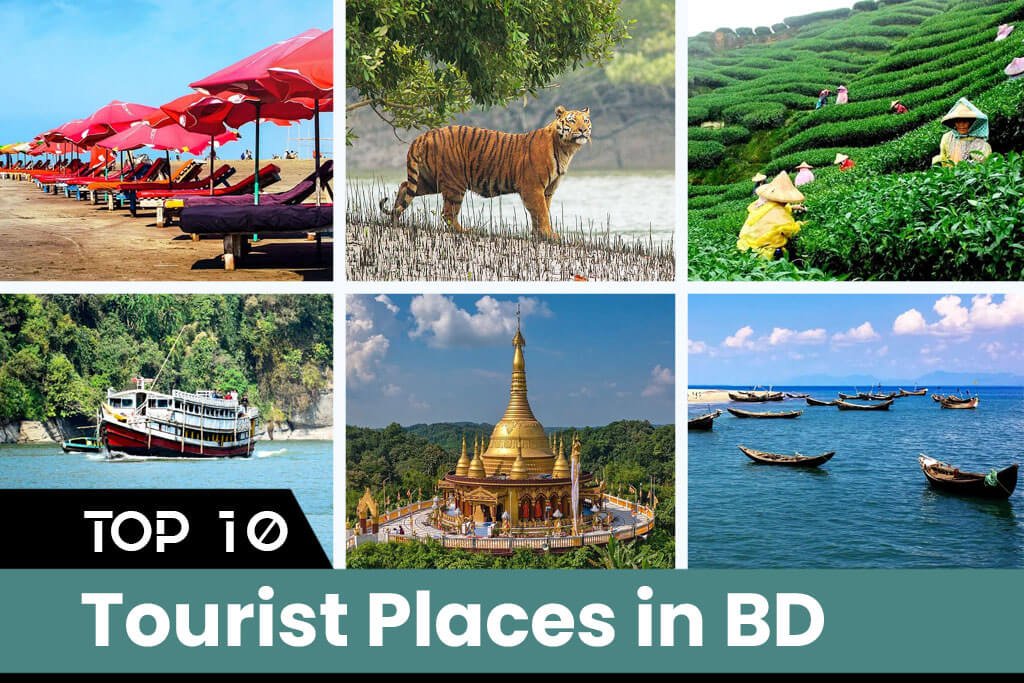

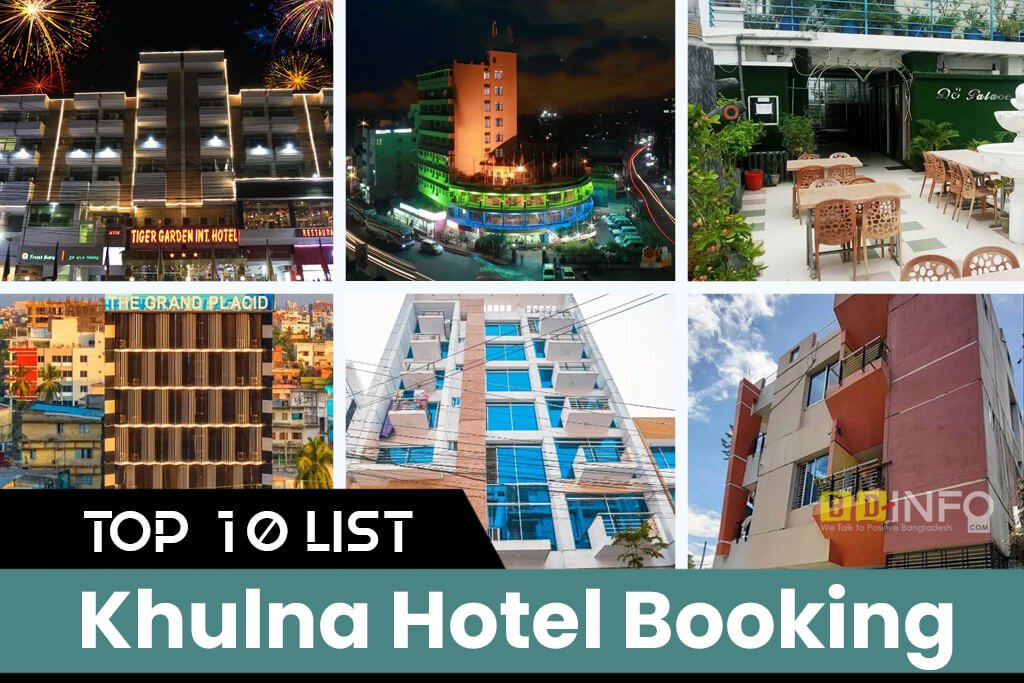
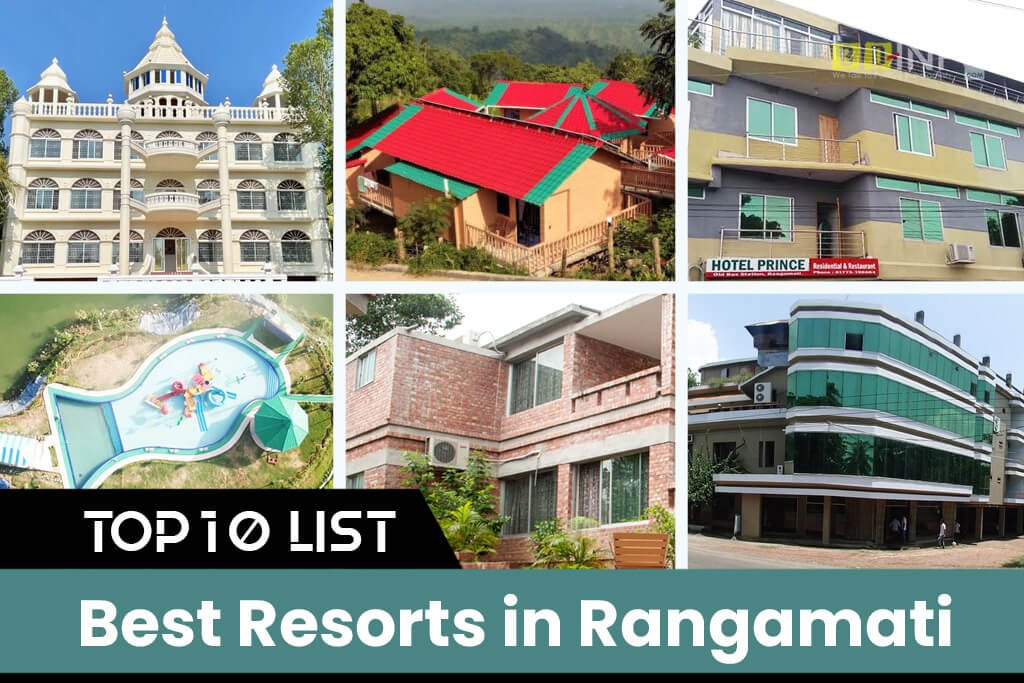
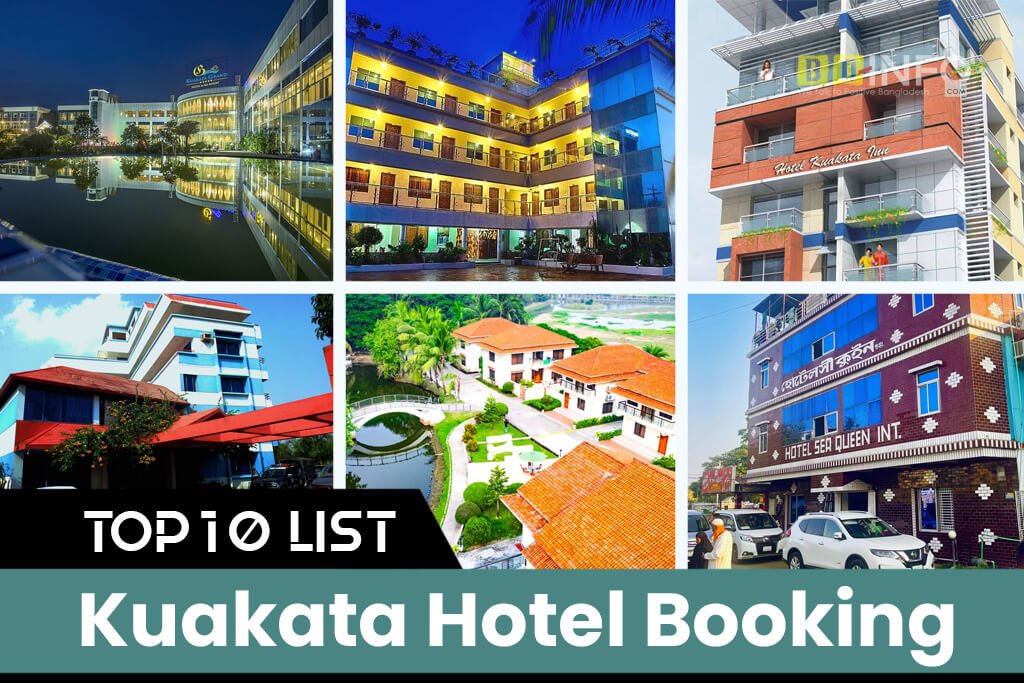
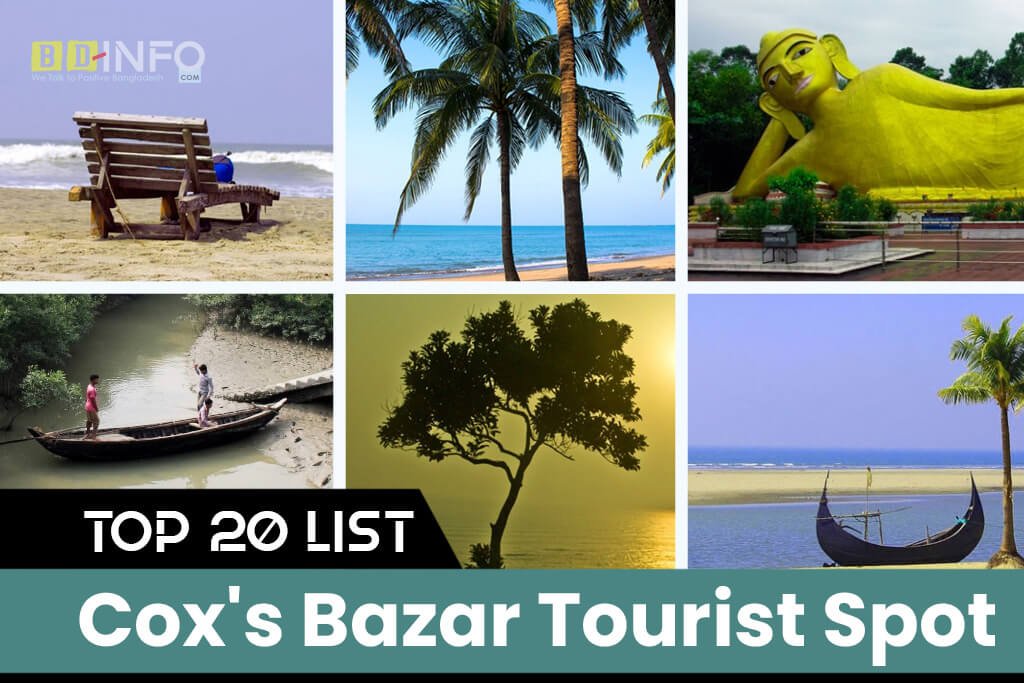

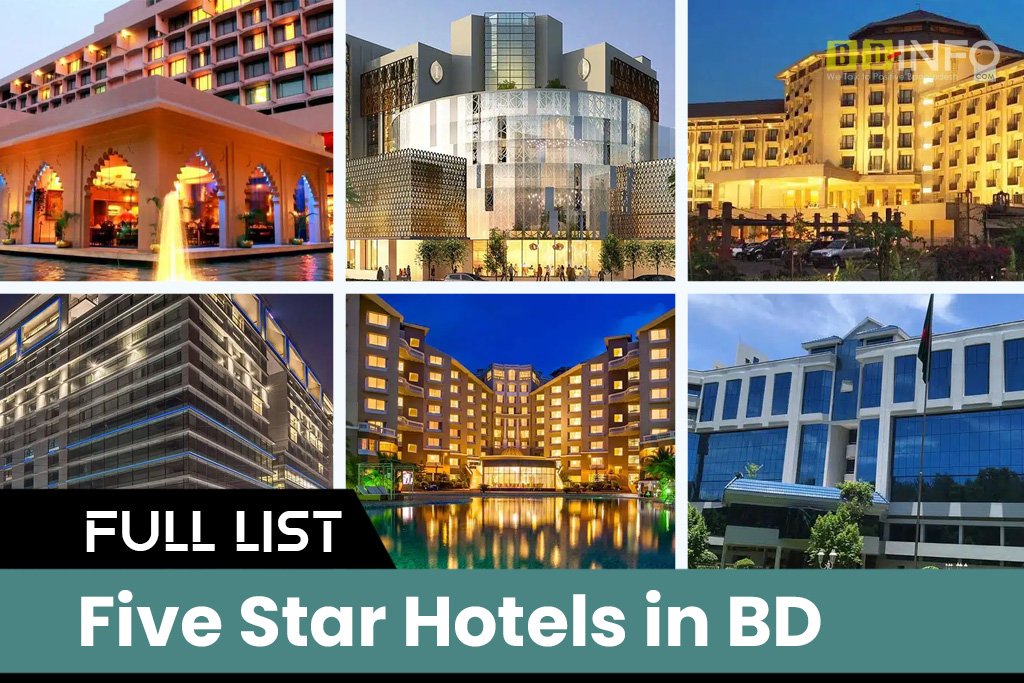

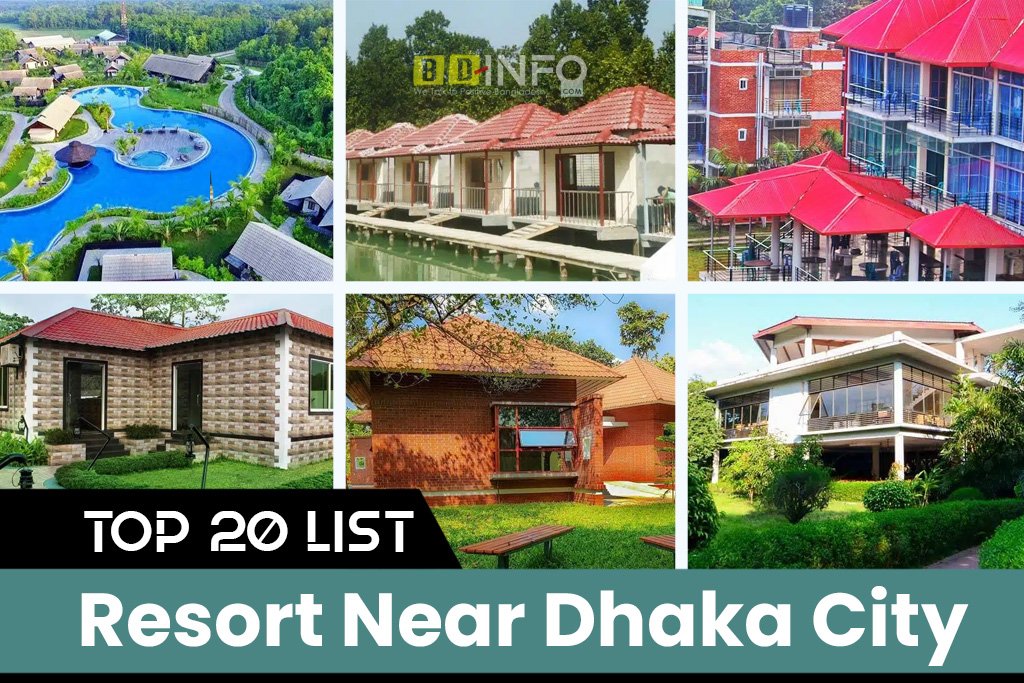
One Comment
I appreciated how your post covered a wide range of tourist places, from natural wonders to historical landmarks to cultural hotspots. The descriptions of each place were informative and gave me a good idea of what to expect.
Your post has definitely inspired me to add some of these places to my travel bucket list and experience the beauty of Bangladesh for myself!